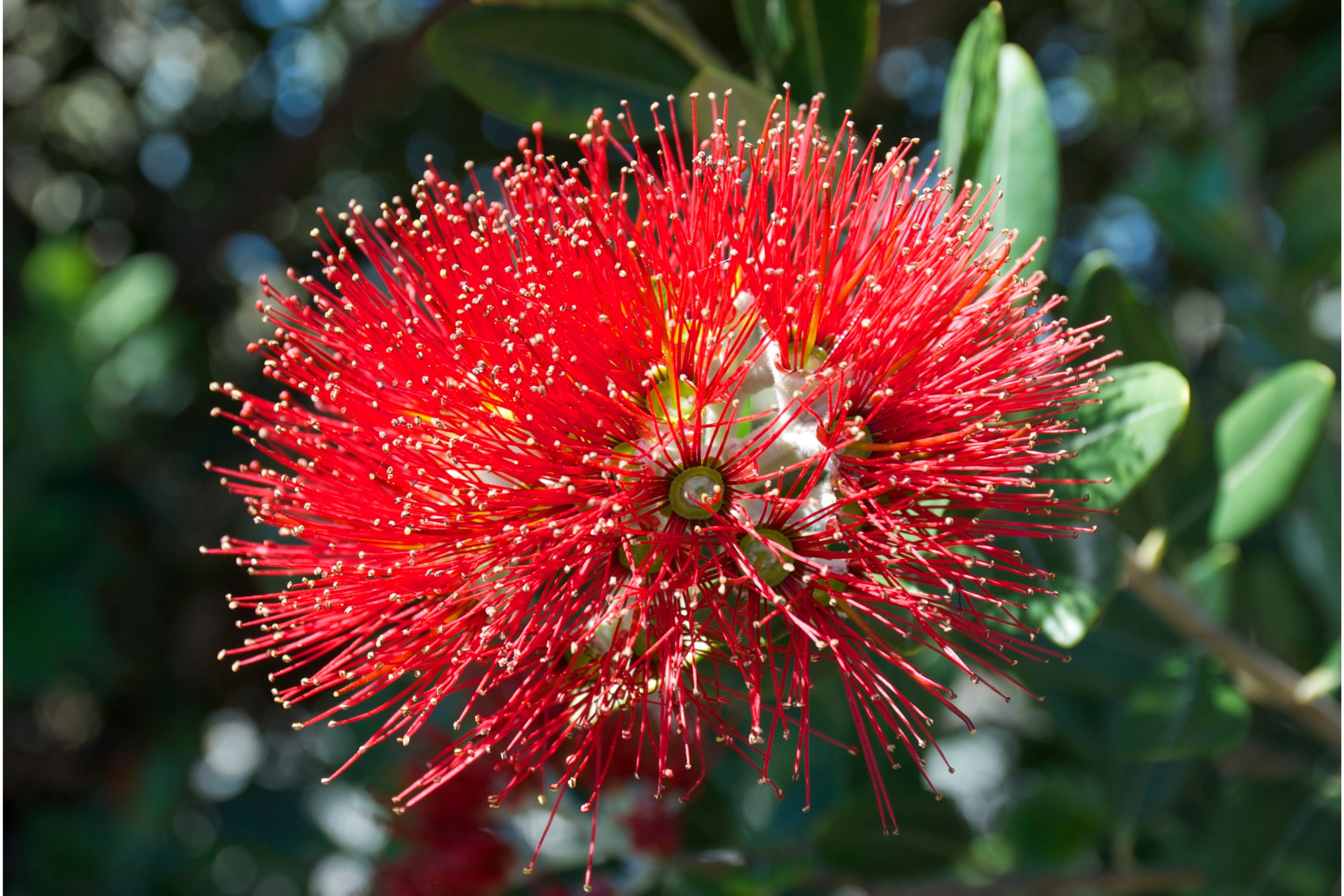Pohutukawa
(Metrosideros excelsa)

Description
Metrosideros excelsa, commonly known as the New Zealand Christmas tree, is an evergreen tree species that belongs to the myrtle family Myrtaceae. The tree is native to New Zealand and can grow up to 20 meters tall. Its striking crimson red flowers make it an iconic symbol of the country's flora, especially during the holiday season. Taxonomy: Metrosideros excelsa was first described by Johann Reinhold Forster and his son Georg Forster in their book "Characteres Generum Plantarum" in 1776. The genus name "Metrosideros" is derived from the Greek words "metra" and "sideros," meaning "heartwood" and "iron" respectively, referring to the hard, dense wood of the plant. The species name "excelsa" means "tall" or "lofty," describing the tree's height. Description: Metrosideros excelsa is an evergreen tree that can grow up to 20 meters tall, although it is more commonly found at heights between 5 and 15 meters. The tree has a spreading, irregularly-shaped crown with a trunk that can reach up to 1 meter in diameter. The bark of the tree is rough and flaky, with a reddish-brown color. The leaves of the New Zealand Christmas tree are leathery and glossy, with a dark green color. They are typically 3-7 cm long and 1-2 cm wide, with a narrow, pointed tip. The leaves are arranged in opposite pairs along the stems. The flowers of Metrosideros excelsa are perhaps its most striking feature. The tree produces masses of crimson red flowers from November to January, which coincides with the holiday season in New Zealand. The flowers are made up of a cluster of long, thin stamens that are tipped with small yellow anthers. The stamens are surrounded by a ring of four or five pointed petals, which give the flower a star-like shape. The flowers are rich in nectar and attract a variety of birds and insects. Distribution: Metrosideros excelsa is endemic to New Zealand, meaning it is found nowhere else in the world. The tree is widespread throughout the North Island and is also found in some parts of the South Island. It is commonly found in coastal and lowland forests, although it can also be found in higher altitude areas. Ecology: Metrosideros excelsa plays an important role in New Zealand's ecology. The tree provides habitat for a wide range of bird species, including tui, bellbirds, and silvereyes, which feed on its nectar and pollinate its flowers. Insects such as bees and butterflies also visit the flowers to feed on nectar and collect pollen. The tree is also important for its role in preventing soil erosion. Its deep root system helps to stabilize steep slopes and prevent landslides. The tree's dense canopy also provides shade and helps to regulate the temperature and humidity of the forest understory. Cultivation: Metrosideros excelsa is a popular ornamental tree in New Zealand and other countries with similar climates. It is valued for its attractive flowers and evergreen foliage. The tree is relatively easy to grow and is tolerant of a wide range of soil types, although it prefers well-draining soils. The tree is propagated from seed or cuttings. Seeds should be sown in autumn or winter, while cuttings can be taken in late summer or early autumn. The tree prefers a sunny or partially shaded position and should be watered regularly during the summer months.
Taxonomic tree:







